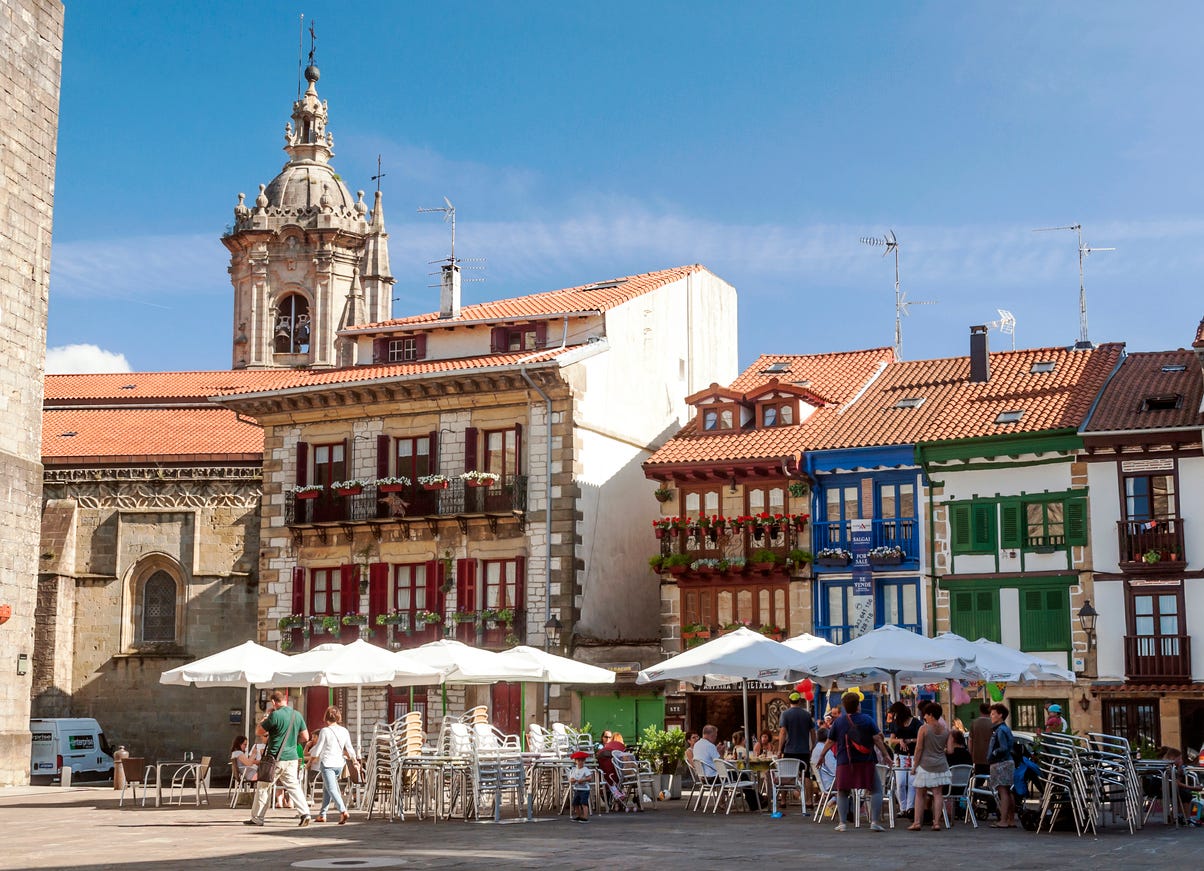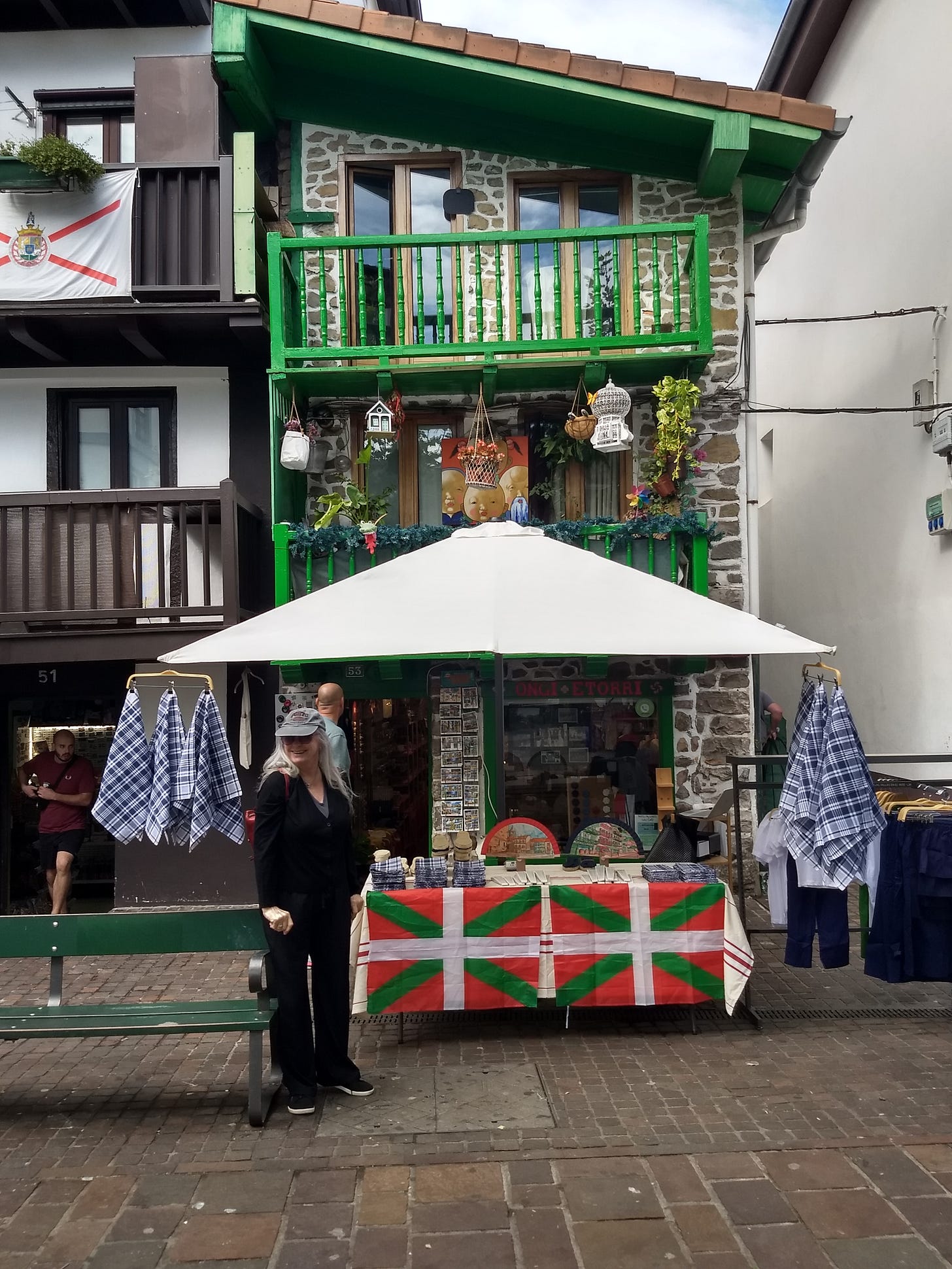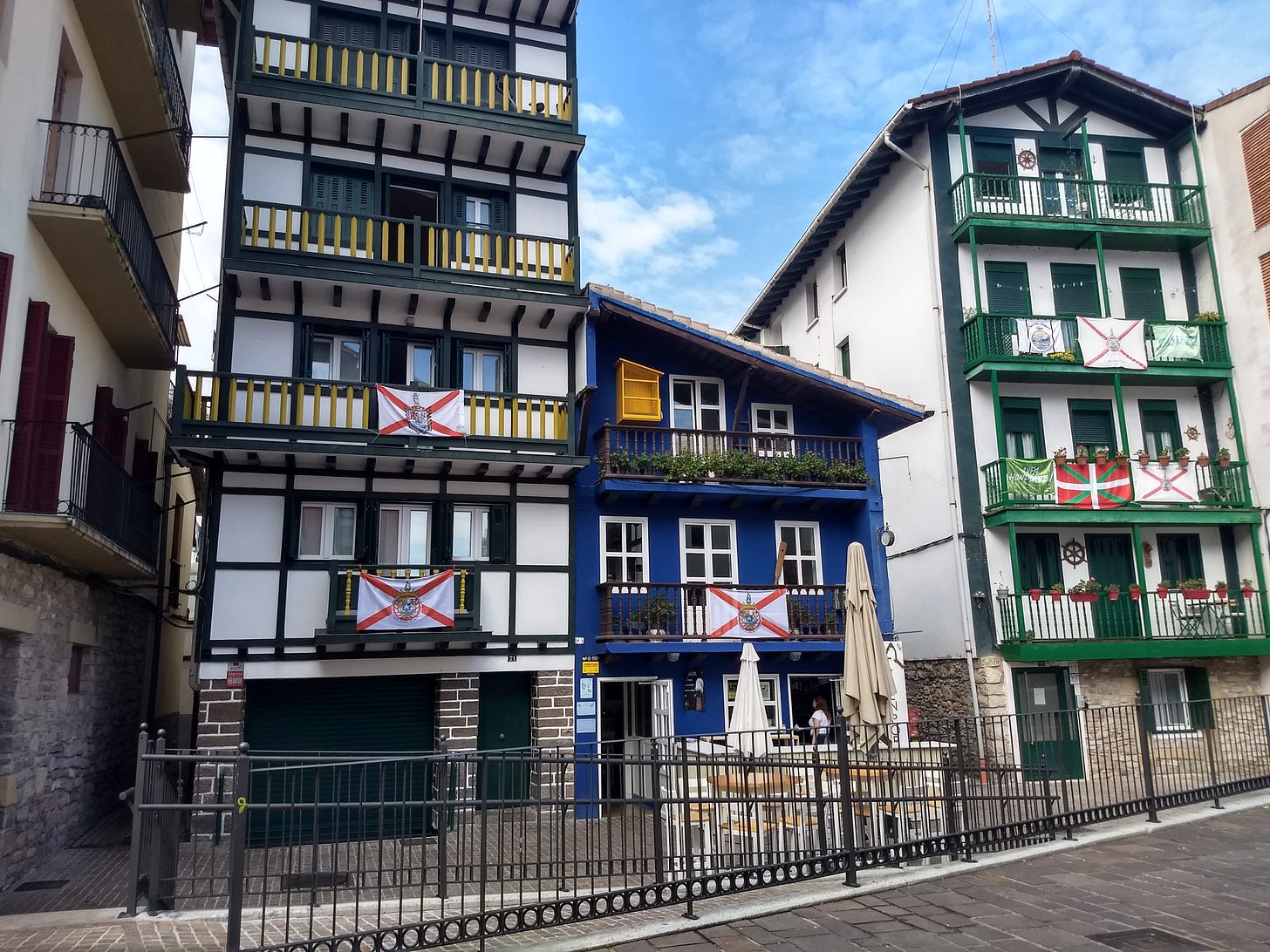A Seaside Jewel at the Edge of Spain
Medieval walls, seaside plazas, and pintxos on the French border.

Have you ever planned to meet friends in a place neither of you has been before? You try to pick a well-known location. In a medieval town, it might be the gate of an ancient fortified city wall, a palace entrance, or maybe a popular restaurant. We chose the gate.
Our Portuguese friends were vacationing in San Sebastián, often called the Jewel of the Basque Country, and wanted to explore the area as much as possible. Having learned of the beautifully painted houses in a nearby town, they invited us to discover it with them.
So on a recent sunny morning, we met them at San Nikolas Gate in Hondarribia. The town sits on the left bank of the Bidasoa River in the northeast of Spain. Standing on the coast, you can look across to Hendaye, France, its beach accessible by a convenient boat service. Maps show the dividing line between Spain and France drawn neatly through the water. But I’m getting ahead of myself.
Strolling the Medieval Streets
We began strolling the medieval cobblestone streets. I was struck by the number of Basque flags fastened to wrought-iron balconies everywhere. I knew the Basque people are famous for being independent and patriotic, but this was quite a statement. Then we learned there had been a festival the day before and another would take place the following day. (Our Portuguese buddies had wisely chosen the in-between time so it would not be crazy crowded or difficult to find parking.)
Naturally, the first stop was for coffee. We quickly found an outdoor café at the Hotel Palacete and enjoyed a snack before walking through Gipuzkoa Plaza. We were on our way to the La Marina neighborhood, where the buildings are former fish markets and fishermen’s huts.
It was impossible to walk along Calle San Pedro, delightfully designed as a pedestrian walkway, without stopping a dozen times to take photos of the brightly colored homes, enticing storefronts, and a bevy of bars and restaurants. We managed to restrain ourselves, only purchasing some cookies at a bakery named, oddly enough, Hawaii. When asked why it was called that, the young woman said her grandfather just liked the sound of the word, although he had never traveled there. She did once surf in Hanalei Bay, then returned home to stay in Hondarribia.
Savoring the Basque Spirit
Speaking of Hawaii, as we strolled Paseo Butrón, the marine walk, the mountains in the distance reminded me very much of the land and seascapes of Hawaii.
We didn’t go to it, but Hondarribia Beach is one of the top tourist attractions in the area, with 800 meters of sandy shoreline on a calm sea, as well as lifeguards, toilets, showers, and changing rooms.
Plaza de Armas is located in the very center of town. For centuries, the square has been the venue for celebrations, receptions, and other important events. The castle of King Carlos V is here, where members of Spain’s royal family resided in 1660 while arranging the wedding of Maria Theresa of Spain to the future King of France, Louis XIV. If you want a treat, you can stay in the castle, as it’s now a luxury hotel.
I had hoped we’d walk up the coast a bit to San Telmo Castle, allegedly once inhabited by pirates and Templars. But we were hungry after hours of exercise, and it was well past lunchtime. Michelin-starred Alameda Restaurant was recommended to us, but we had a different plan. Our friends wanted to return to a few spots they’d discovered in San Sebastián. They promised we would eat the best pintxos ever—those scrumptious little two- or three-bite bar snacks actually created in San Sebastián about 100 years ago. They also knew where to buy the finest Basque cheesecake.
Now those are good friends.
Thinking about exploring Spain beyond the usual stops? Discover hidden gems like Hondarribia and get insider advice on living abroad with International Living. Subscribe here today.




